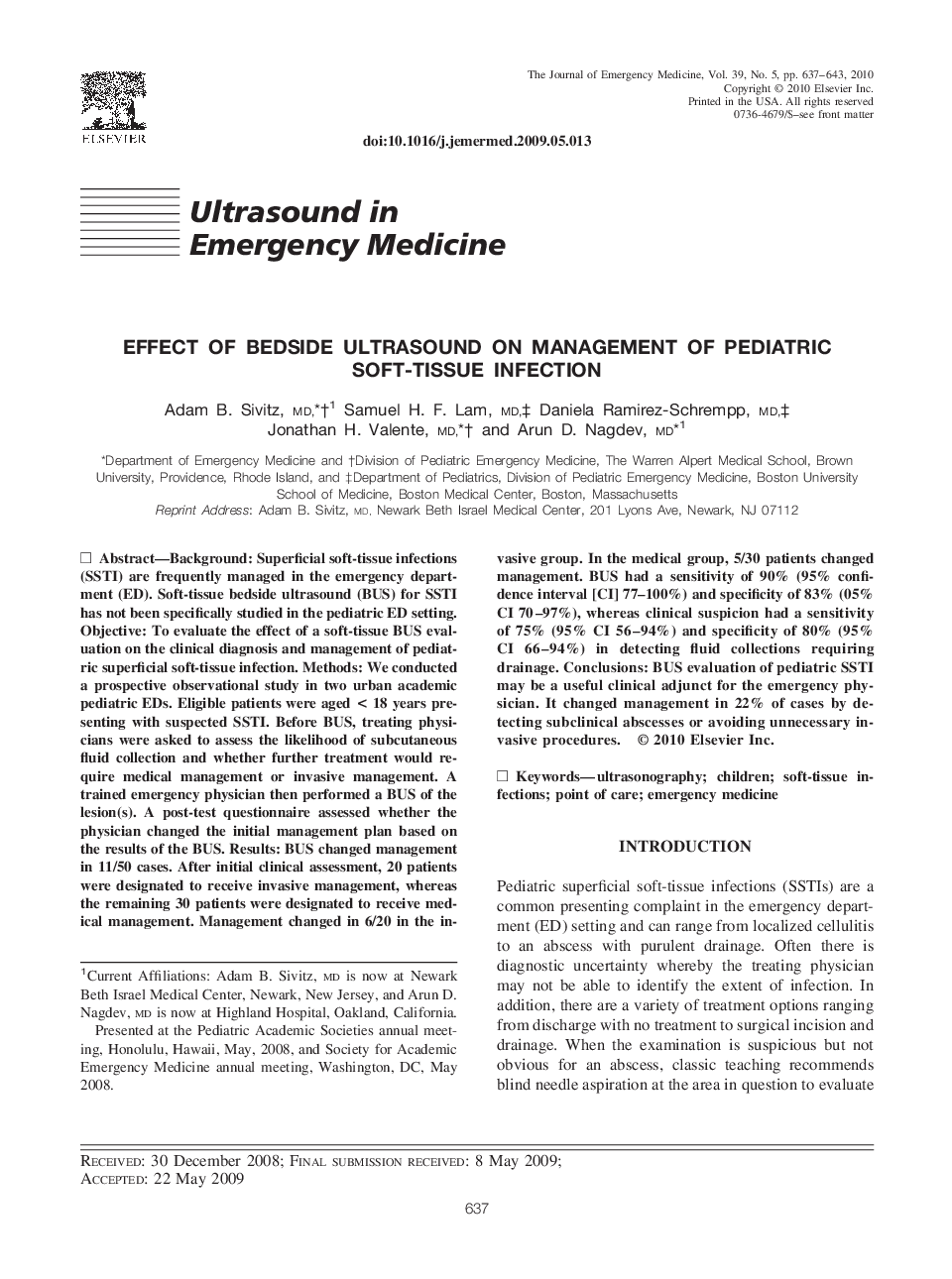| Article ID | Journal | Published Year | Pages | File Type |
|---|---|---|---|---|
| 3249443 | The Journal of Emergency Medicine | 2010 | 7 Pages |
Background: Superficial soft-tissue infections (SSTI) are frequently managed in the emergency department (ED). Soft-tissue bedside ultrasound (BUS) for SSTI has not been specifically studied in the pediatric ED setting. Objective: To evaluate the effect of a soft-tissue BUS evaluation on the clinical diagnosis and management of pediatric superficial soft-tissue infection. Methods: We conducted a prospective observational study in two urban academic pediatric EDs. Eligible patients were aged < 18 years presenting with suspected SSTI. Before BUS, treating physicians were asked to assess the likelihood of subcutaneous fluid collection and whether further treatment would require medical management or invasive management. A trained emergency physician then performed a BUS of the lesion(s). A post-test questionnaire assessed whether the physician changed the initial management plan based on the results of the BUS. Results: BUS changed management in 11/50 cases. After initial clinical assessment, 20 patients were designated to receive invasive management, whereas the remaining 30 patients were designated to receive medical management. Management changed in 6/20 in the invasive group. In the medical group, 5/30 patients changed management. BUS had a sensitivity of 90% (95% confidence interval [CI] 77–100%) and specificity of 83% (05% CI 70–97%), whereas clinical suspicion had a sensitivity of 75% (95% CI 56–94%) and specificity of 80% (95% CI 66–94%) in detecting fluid collections requiring drainage. Conclusions: BUS evaluation of pediatric SSTI may be a useful clinical adjunct for the emergency physician. It changed management in 22% of cases by detecting subclinical abscesses or avoiding unnecessary invasive procedures.
